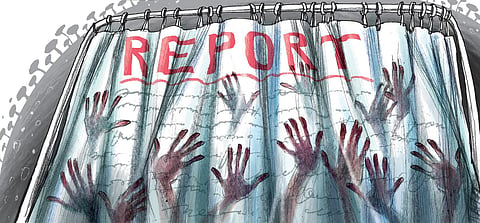

Many physical as well as financial processes grow or decay exponentially. For example, most people after the Covid pandemic have heard or read that the number of people infected with the virus increases exponentially. Many people believe that exponential growth means rapid growth. But few realise the substantive and remarkable implications of this beyond that.
A constant exponential growth mathematically implies that the amount by which a quantity—number of people infected, amount of money invested—increases is higher when the amount you already have is more. Also, the time it takes for the amount, which compounds every day, every month or every year, to become double the initial amount (or half of the initial amount in case of constant exponential decay for radioactive materials) remains constant. This has profound implications.
One beautiful application is in determining the age of fossils. The constant half-life of carbon is estimated to be around 6,000 years. This scientific fact is used to estimate how long a plant or an animal has been dead by measuring the amount of carbon it still has—since it is getting halved every 6,000 years, if you find that only one-tenth of 1% is still left, it must be 60,000 years old as the carbon would have halved 10 times.
Governments and public health officials are often tempted to under-report the number of infections, sometimes to prevent panic and sometimes to justify avoiding imposition of lockdowns or other restrictive measures. What most of us don’t realise is when something doubles over a fixed period of time—say the number of people infected with Covid virus is doubling every week—after a few weeks it won’t matter where we started. To take a specific example, suppose a community has 1,000 cases of infections but the officials report only 100 cases, or just 10% of actual cases.
It may be feasible initially to hide that 900 additional people are infected, in addition to the 100 that were actually reported. But in one week, the number of infections will become 2,000 and in a mere 10 weeks the number of infected cases would become 1,000 times 1,000, or 10 lakhs. If the initial number of infections were just 100, in 10 weeks the number of infections would grow to 1 lakh only, instead of 10 lakhs. Hiding 900 infected people at the beginning may have been easy but hiding 9 lakh infections in a mere 10 weeks would be nearly impossible. Hiding, which is a linear activity because each additional act of hiding requires proportionally additional resources, becomes exponentially difficult because truth is growing exponentially.
Further, even if one were successful in hiding the truth, say report 100 cases instead of 1,000 the first week, report 200 instead of 2,000 the following week, report 400 instead of reporting 4,000 in week 3 and so on, the false reports—10% of the true number—will lag the true numbers for less than four weeks because in three weeks the numbers are eight times the initial amount and in four weeks the numbers are 16 times the original amount. So even the false report at 10% the true value will become 10 times that of the truth soon enough.When truth is growing exponentially, you may be able to hide it, but you will not be able to do so for long and the efforts required will become frustratingly exponential with time.
Bhagwan Chowdhry
Professor of Finance, Indian School of Business & Research Professor, UCLA
(Bhagwan@isb.edu)